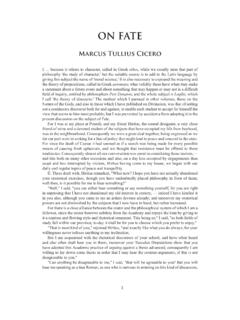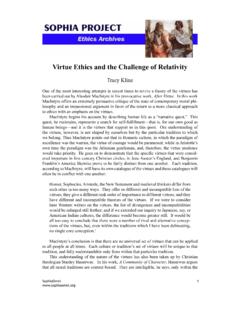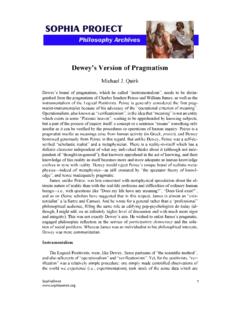Transcription of Aesthetics: What is Art? - THE SOPHIA PROJECT
1 Aesthetics: what is Art?Stephan T. MayoAesthetics is one of two main branches of value theory in philosophy. Ethics is a study of values in human conduct. Aesthetics is a study of value in art. The word traces its origin to a Greek word that means sense appearance. However that could too narrowly define the field when we consider that art include prose and poetic literature. We could quibble that literature always has an auditory component. When we read literature the sounds and inflections of words accompany our thoughts. We could solve the problem by saying that aesthetics is a study of value in the plastic, visual, conceptual, auditory and performance arts. The difficulty of answering the question: what is art? is a major one in aesthetics. The term has to cover a vast variety of media, from the plastic arts of painting and sculpture, to music, literature and the performing arts of dance, opera, and theater.
2 It can even be expanded to certain performance sports like ice-skating, water ballet, diving and gymnastics. Seeking a common definition that covers the wide number of art productions from the earliest cave drawings to the latest experimental film is difficult. The definition would have to identify both Marcel Duchamp s The Fountain (which is a urinal set in a glass cube) and Michelangelo s Pieta as equally works of art. The most uncontroversial and agreed upon definition is that art is anything that is artificial, that is anything that humans make which is not simply something that exists in nature. Even that might be tested by, say Picasso s found object sculptures, many of which consist of natural objects. However Picasso juxtaposes these natural objects into unique forms. If, however, I place a twig in a frame and hang it on a museum wall that might qualify as art since I have taken it out of its natural context and intend it to be seen as though it were a production of an artist.
3 We will see that Arthur Danto will claim that it is the referential nature of art that distinguishes it from natural objects (a twig on a tree doesn t refer to anything.) More provocatively Marshall McLuhan (The Medium is the Message) claimed that art is anything we can get away with. It should be obvious by the above that there is nothing uncontroversial about aesthetics including the very definition of art. Still the rumination and analyses of philosophers who think about these issues have consistently enhanced the enjoyment of those who love the arts because they highlight multiple features of the aesthetic experience. In this short introduction I want to briefly discuss how aesthetics interrelates with the other main branches of philosophy: metaphysics, epistemology, ethics and political l The Problems of Philosophy MetaphysicsMetaphysics is a branch of philosophy that inquires about the being or reality of things.
4 Aesthetics interrelates with metaphysics when one inquires about the ontological status of the work of art. what kind of being is it? Back in the 5th Century BC, the Greeks of ancient Athens interpreted aesthetics as a search for what made an object beautiful. Plato saw that there were many beautiful things such as paintings, mosaics, sculptures, lyric poetry, epic poetry, all beautiful but not Beauty Itself. When an artist makes a beautiful thing she mysteriously attunes herself with a secret reality that lies beneath and behind the concrete work of art, something that is not itself visible or tangible, to the Ideal universal and eternal Form (eidos) of Beauty Itself. In the Middle Ages, theologian/philosophers like St. Thomas Aquinas made beauty one of the transcendental properties of God. Thus God being infinitely beautiful created the world in which His beauty would be manifested both in the natural world and in the human artistic creations that imitated the natural world.
5 Consequently the artist attempted to imitate the natural world in order to reveal the supernatural world beyond was suspicious of the artist as one who not only could reveal the natural world but could distort it as well. Since the natural world was only an imitation of the really real of the Ideal Forms, art was an imitation of an imitation. Better to forget about art and contemplate the pure Forms directly. In the nineteenth century, following the aesthetic writings of Immanuel Kant, the quest for beauty was augmented by the search for the sublime. Beauty is experienced when a perceived object most perfectly embodies our pre-formed idea of its nature. This felt sense of the aptness of the representation to the nature of what it represents is beauty. However, there are times when confronted with the immense forces of nature or by works of art which defy our ability to fully take them in and rationally interpret them.
6 Subsequently we have emotional responses to the overwhelming visual and auditory array giving rise to the sense of the sublime an experience which transcends reason. The Achilles heal of the representational view of art (judging a work on how well it could imitate, realistically depict, capture the true universal essence of a thing, or reveal the Divine origin of things) has always been music. what does music, especially non-vocal music, depict? Despite the best efforts of Romanticist artists and critics, not every piece of music tells a story or depicts a natural phenomenon. About the time of the invention of photography, artists, critics and public alike began to realize that the work of art had never been a mere imitation or copy of nature. Viewing a framed painting was not really like looking through a window, and Botticelli s women are worlds apart from a woman photographed or directly observed.
7 Aestheticians focused on the art object itself, and not on any alleged subject, as art became less and less representational and more and more divorced from both natural and supernatural beings. If what we perceive in the work of art is the work of art, what is that, since certainly we do not merely perceive the raw materials from which the work is crafted? It is not oil paint blotches that we see in a Cezanne landscape, nor is it Montaigne Saint-Victoire as a real mountain. We enter the visual world of Cezanne and perceive the art object that conveys simultaneously a sense of depth and of flatness of the picture surface as well. We do not perceive isolated blobs of color, but shapes and forms in a style in a composition (the visual Cezannesque world ) unique to the artist. Susanne Langer will call this peculiar world the virtual space of the painting as distinguished from the actual dimensions of the canvas.
8 Get too close to the work and it disappears. Not only does the form and unity disappear, but the medium (the materials and the psychological and emotional associations we have when we see the materials) disappear and only the bare materials remain (stretched canvas and oil paint smears.) Later Aesthetics l 361 abstract expressionist artists will present shape and color divorced (abstracted) entirely from a discernible subject matter. Artists such as Ad Reinhardt title their painting as Number 43, which depicts nothing at all discernible in shift from the artist s subject to the artistic object by aestheticians brings us to the interrelationship between aesthetics and mysteriousness of the reality of the artistic object gets clarified when we stop looking for the supernatural or natural origins of the work and concentrate on the intentional object of the work. Problems such as how a work of art such as a play, opera, dance or orchestral piece might exist in multiple manifestations or performances and yet remain a single work of art are also alleviated when we consider that the notation of the work allows the presentation of the artistic object to a variety of audiences or viewers.
9 The work of art exists between the materials used by the artist or the performers and the consciousnesses of the audience or viewers. Without the pattern recognition aptitudes of our minds there would be no work of art. Aestheticians like Norman Goodman in Art and Illusion bring this relationship out in high definition. It should have been obvious to us that the glint of the sun emerging over the hills at dusk is not a light beaming from the back of the painting but a smear of titanium white oil paint, that a line can be perceived as a surface and a three-dimensional cube produced by grey tints juxtaposed against broad flat areas on a two-dimensional canvas. If an audience member jumps up onto the stage to save the damsel in distress , he has obviously mistaken the art object for natural reality. This brings us to an interesting set of questions. If the artwork is the phenomenal object and not the natural materials from which it is comprised, what is the relationship between art and truth?
10 Verisimilitude may be one of the qualities that we appreciate in art as when a visitor waved at the painted sons of Charles Wilson Peale in his The Staircase Group or when Meryl Streep is praised for capturing the look, voice and mannerisms of Margaret Thatcher in the Iron Lady. However, the copy view of art hardly applies to the prostitutes in Picasso s cubist Demoiselles d Avignon or to the form of a Mozart sonata. That having been said, we would still like the proposition Sherlock Holmes smokes a pipe. to be true, whereas Sherlock Holmes was a vampire is understood as false. There are several contenders for the criterion of truth in art. Some aestheticians claim that the deliberate intention of the artist is the basis of the true interpretation of the work of art. The art purists or formalists reject the intention-of-the-artist theory. The later say that appreciation of artistic form independent of any reference to a subject or the emotions or intentions of the creator of the art work is the aesthetic experience.
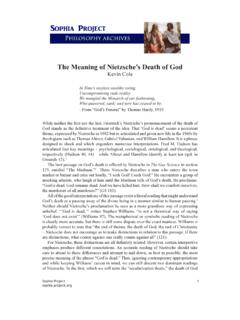
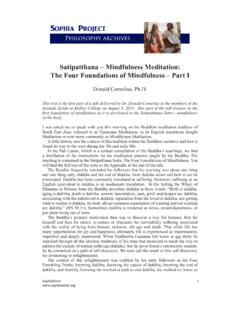
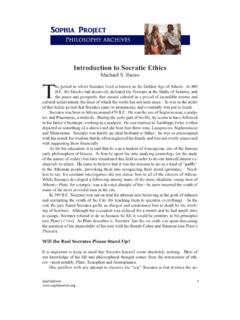
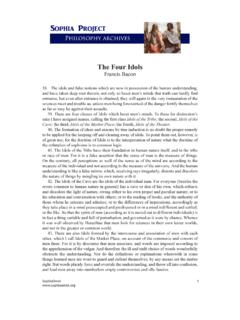
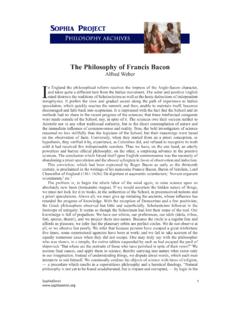
![Notes on Plato’s Gorgias [449c-466a] - Sophia Project](/cache/preview/0/5/3/c/e/1/d/7/thumb-053ce1d73ee53d8f939f1988e67d4864.jpg)
![Critique of Rhetoric [Gorgias 447a-461c] - Sophia Project](/cache/preview/9/f/9/b/c/2/9/8/thumb-9f9bc298ba899803867703925e030fa2.jpg)
